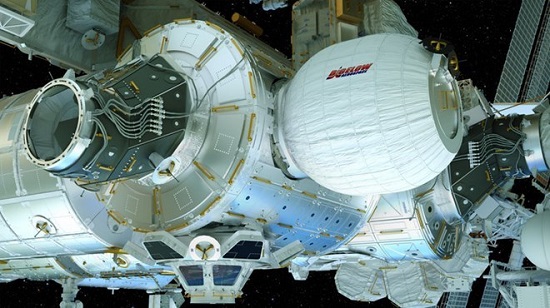Space technology greatly contributes to Viet Nam's development
Viet Nam has made remarkable achievements in the field of space technology, bringing practical benefits to the country’s socio-economic development.
Viet Nam marked its official joining in the journey to conquer space by launching the 300 million USD satellite Vinasat-1 into orbit in 2008. It is now one of the 25 countries worldwide to have private observation satellites.
The Government approved a national strategy for space technology research and development by 2020, aiming to design, manufacture and test ground stations and small Earth-orbiting satellites.
 |
| Illustrative image (Source: NASA) |
The strategy also focuses on upgrading facilities, developing missile technology and training high-quality human resources to meet the demand of the sector.
According to Pham Anh Tuan, Director of the Viet Nam National Satellite Centre (VNSC) under the Viet Nam Academy of Science and Technology, in recent years, Viet Nam reaped remarkable successes in developing space technology, with the launch of Vinasat-1 and Vinasat-2 satellites into space in 2008 and 2012, and the remote-sensing VN Redsat-1 and micro satellite "PicoDragon" in 2013.
Vinasat-1, Vinasat-2 and VNRedsat-1 are useful tools for providing timely information about natural disasters like floods and storms, and assisting with climate change adaptation, managing natural resources and promoting agricultural development.
Satellite image received were widely applied by ministries, sectors and localities.
Viet Nam has also paid attention to expanding international links in the field, through agreements signed with the Japan Aerospace Exploration Agency (JAXA) and the US National Aeronautics and Space Administration (NASA).The country plans to enhance cooperation with the aerospace agencies of France and Russia in the time ahead.
Some important projects have also been implemented, including the Viet Nam Satellite Centre project - the largest one in Viet Nam in the last 35 years.
The project is the crux of the aerospace technological application and research strategy of Viet Nam through to 2020, with a total investment of 600 million USD sourced from the official development assistance (ODA) of the Japanese Government.
It consists of three components: technical infrastructure, technology transfer and human resources development.
Through the project, Viet Nam sent 35 engineers to Japan for further training. During their study, they joined in researching and manufacturing the 50kg MicroDragon satellite, which aims to observe the coastal areas of the country to evaluate water quality, navigate marine food resources and follow up on changes in coastal areas to inform Viet Nam's fish breeding sector. This satellite is scheduled to be launched into space in 2018.
Under the satellite development roadmap, the country will also launch the LOTUSat-1 and LOTUSat-2 satellites, which have been designed by Japanese experts and will be assembled and piloted by Vietnamese engineers, by 2019 and 2020, respectively.
These are expected to provide data, contributing to improving the efficiency of agricultural production and mitigating damage caused by natural disasters.
When the project is completed by 2020, Viet Nam hopes to become one of the leading countries in Southeast Asia in satellite development, Tuan said.
However, Viet Nam is facing great challenges in training human resources, which is the most important part of developing space technology in Viet Nam, he noted.
The VNSC currently has 117 staff and it is expected to need 233 more in the coming time for its goals of designing, manufacturing and operating satellites, he said.
(Source: VNA)